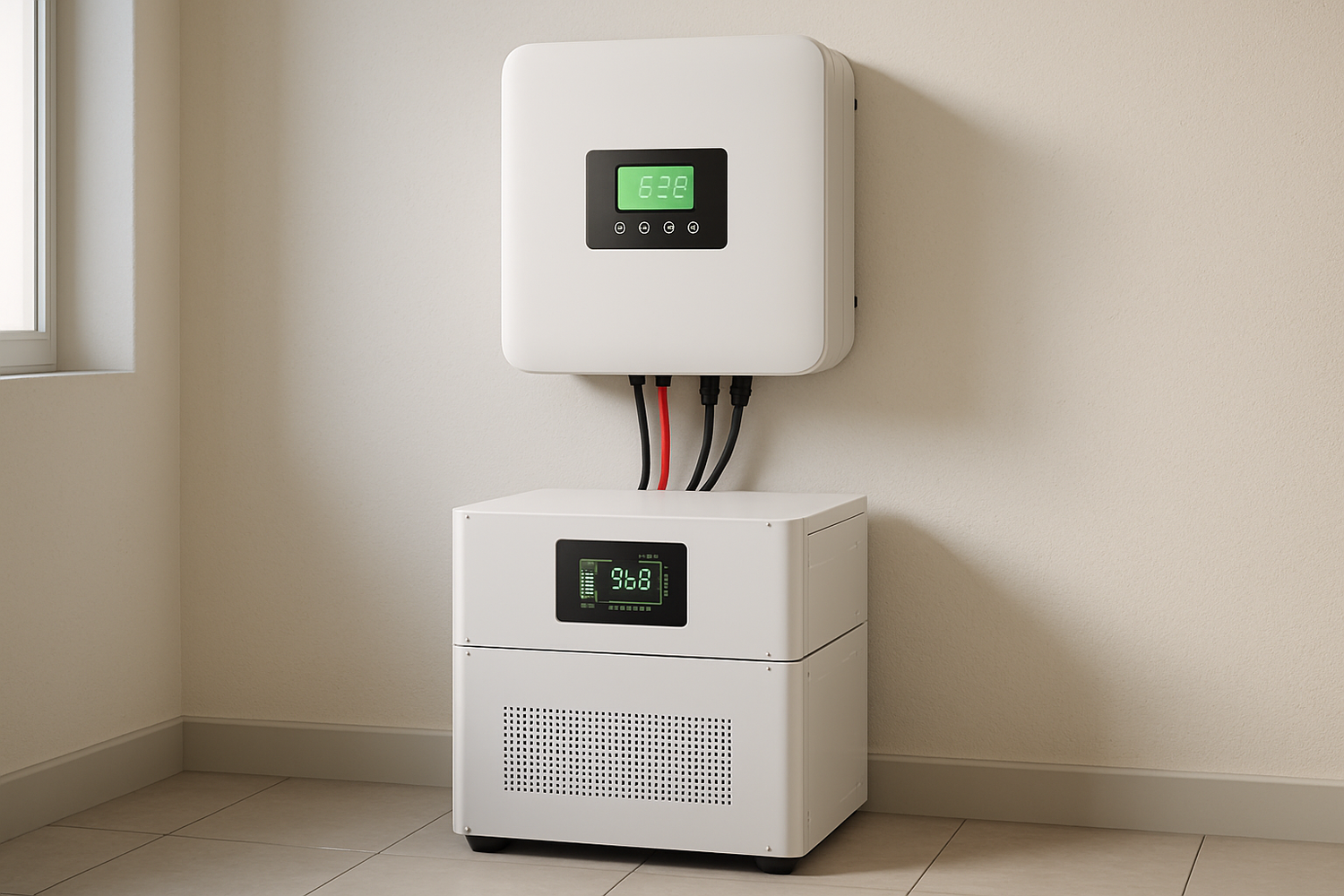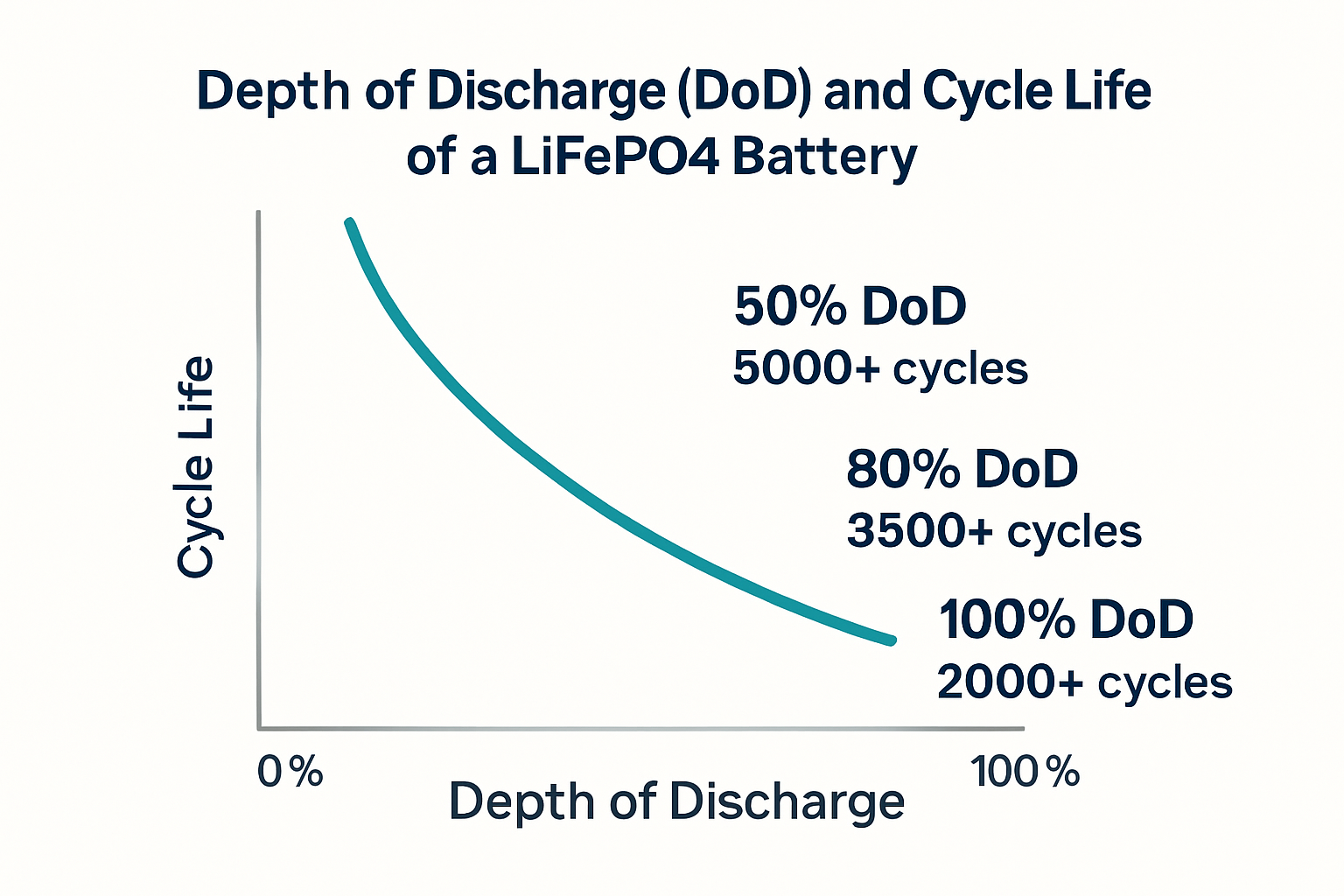A lithium iron phosphate (LiFePO4) battery represents a significant investment in your energy independence. With the potential to last over a decade, its longevity is one of its most compelling features. This lifespan isn't guaranteed; it's earned through proper management. This LiFePO4 longevity guide provides a clear roadmap, detailing the critical stages of your battery’s life and the actions needed at each step to achieve maximum durability and performance.
Stage 1: Building a Strong Foundation (The First Year)
The initial phase of your battery's service life is crucial. Correct setup and configuration establish the foundation for years of reliable operation. Getting this stage right prevents premature degradation and ensures you get the performance you expect from your home battery storage system.
The Importance of a Quality Installation
A successful LiFePO4 battery lifespan begins with a professional installation. The system's core is the Battery Management System (BMS), which acts as the brain of your battery. A high-quality BMS protects against overcharging, over-discharging, and extreme temperatures while actively balancing the cells. This balancing act ensures all cells work in unison, preventing any single cell from becoming a weak link that could compromise the entire pack. Proper initial charging, often called a conditioning charge, helps the BMS calibrate and establish a healthy baseline for the battery pack.
Establishing Performance Baselines
In the first few months, you should monitor your system to understand its baseline performance. Take note of its capacity, charging times, and how it responds to different loads. This initial data is your reference point for the future. Any significant deviation from this baseline in the coming years could indicate a potential issue that needs attention. A solid understanding of these metrics is key to managing your energy storage solution effectively.
Stage 2: The Marathon of Daily Operation (Years 1-5)
With the foundation set, the focus shifts to managing the daily operational stresses that influence battery degradation factors. During these years, your habits and system settings will have the most significant impact on the long-term health of your lithium phosphate battery.
Mastering Depth of Discharge (DoD)
Depth of Discharge refers to the percentage of the battery's capacity that has been used. While a 12v 100ah LiFePO4 lithium battery can handle deep discharges, consistently draining it to empty will shorten its life. Shallower discharge cycles put less strain on the battery's internal components. For example, limiting DoD to 80% can more than double the cycle life compared to fully discharging the battery each time. Managing DoD is a powerful tool for extending longevity.
| Depth of Discharge (DoD) | Estimated Cycle Life |
|---|---|
| 100% | 2,000 - 3,000 Cycles |
| 80% | 4,000 - 5,000 Cycles |
| 50% | 6,000 - 8,000+ Cycles |
Controlling Temperature and C-Rates
LiFePO4 chemistry is stable, but it still prefers a comfortable operating environment. High temperatures accelerate chemical degradation, permanently reducing capacity. According to the U.S. Department of Energy's research on battery technologies, thermal management is critical for both performance and safety. Ensure your battery has adequate ventilation and is not exposed to direct sunlight or extreme cold. Similarly, the C-rate, or the speed at which a battery is charged or discharged, affects its health. Lower C-rates generate less internal heat and reduce stress, contributing to a longer lithium iron phosphate battery life.
Stage 3: Sustaining Peak Performance (Years 5-10)
As your battery enters the second half of its expected lifespan, your focus should shift from operation to proactive maintenance and observation. The system will show signs of aging, and adapting to these changes is key to reaching and exceeding the 10-year mark.
Long-Term Monitoring and System Health Checks
Gradual capacity fade is a normal part of any battery's life. Continue to monitor your system's performance, comparing it to the baseline you established in the first year. Regular visual inspections are also important. Check for any corrosion on terminals and ensure all connections remain tight. The BMS will continue its work, but keeping an eye on the overall system ensures it operates efficiently. For a deeper analysis, you can consult resources that provide an ultimate reference for solar storage performance, which can help you interpret the data your system provides.
Adapting to Normal Battery Aging
As capacity fades, you might need to adjust your energy usage habits or the settings on your solar inverter. For instance, you may slightly adjust the low-voltage cutoff point to protect the aging cells. This proactive approach ensures you continue to get the most out of your investment without putting undue stress on the system. The International Energy Agency (IEA) highlights that robust management strategies are essential for maximizing the value of energy storage assets over their full operational life.
Stage 4: Beyond a Decade and Second-Life Potential
Reaching the 10-year mark is a testament to quality manufacturing and diligent management. At this point, the battery may still have significant life left, but it's important to understand what comes next.
Defining the End of a First Life
A battery's 'end-of-life' for a demanding application like a home energy storage system is typically defined as the point when it can only hold 70-80% of its original rated capacity. While it may no longer be suitable for running your entire home, it is far from useless. Safely decommissioning the battery requires professional handling to ensure all energy is discharged and the system is disconnected properly.
The Growing Importance of Second-Life Applications
A retired deep cycle lithium battery can begin a second life in less demanding roles. These can include powering outdoor lighting, small electronics, or serving as a backup for non-critical loads. The International Renewable Energy Agency (IRENA) emphasizes the role of second-life batteries in creating a more sustainable, circular economy for energy storage. This approach reduces waste and extracts the maximum value from the battery's materials.
Your Roadmap to Lasting Energy Security
Achieving a LiFePO4 battery lifespan of ten years or more is not a matter of luck. It is the result of a deliberate strategy, a roadmap that begins with a quality installation, continues with intelligent daily operation, and evolves into mindful long-term care. By managing factors like Depth of Discharge, temperature, and charge rates, you take control of your battery's destiny. This approach transforms your energy storage system from a simple product into a long-term asset that provides lasting value and energy security.
Disclaimer: This article is for informational purposes only and does not constitute financial or legal advice. Consult with a qualified professional for guidance specific to your situation.
Frequently Asked Questions
What is the real-world LiFePO4 battery lifespan?
With proper management, a high-quality LiFePO4 battery can realistically last between 10 to 15 years. This translates to anywhere from 3,000 to 8,000 charge cycles, depending heavily on factors like Depth of Discharge, operating temperature, and the quality of the Battery Management System (BMS).
Can I mix old and new LiFePO4 batteries?
It is strongly advised not to mix old and new batteries in the same system. Differences in capacity and internal resistance between the batteries will cause an imbalance. The BMS will struggle to manage the pack, leading to overcharging of new cells and over-discharging of old cells, which reduces the lifespan and safety of the entire system.
How does the BMS contribute to the lifespan roadmap?
The BMS is the most critical component for longevity. It acts as a continuous guardian by preventing over-voltage, under-voltage, and extreme temperatures. Its most important long-term function is cell balancing, which ensures all cells in the pack age at a similar rate, preventing premature failure of the entire battery.
What happens if I fully discharge my LiFePO4 battery?
Fully discharging a LiFePO4 battery (to 0% State of Charge) places significant stress on its internal chemistry. While a quality BMS will prevent the voltage from dropping to a point of permanent damage, repeated deep discharges to 100% DoD will accelerate capacity degradation and significantly reduce the total number of cycles the battery can provide over its life.





Leave a comment
All comments are moderated before being published.
This site is protected by hCaptcha and the hCaptcha Privacy Policy and Terms of Service apply.